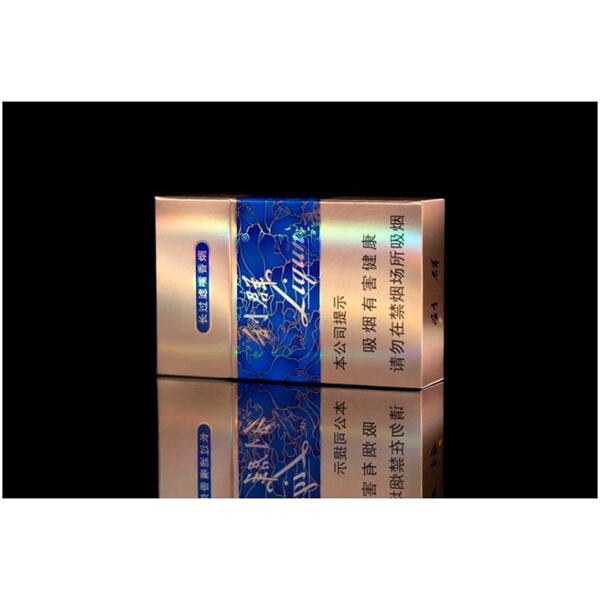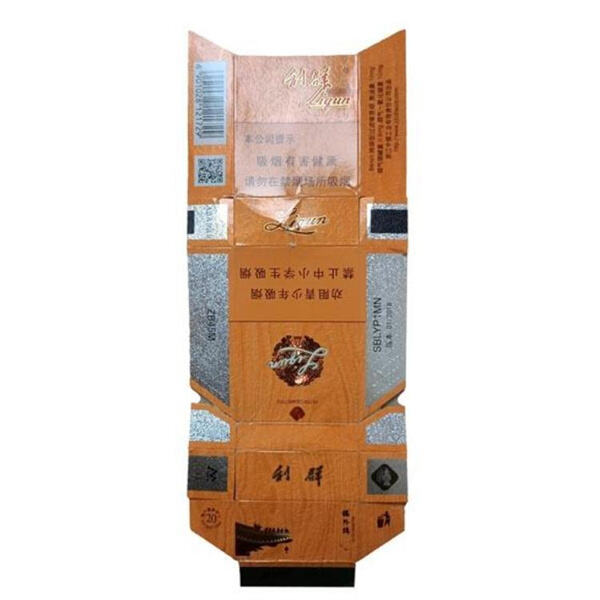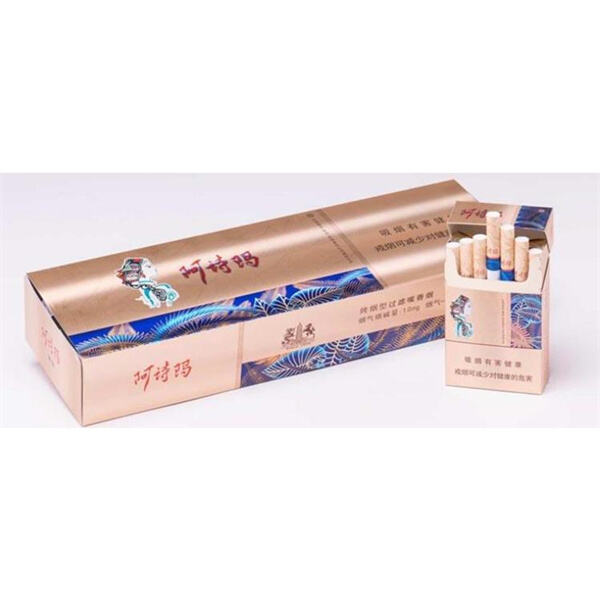Երկար ժամանակահատվածից առաջ, սիգարետները չէին գալիս տուփերում: Այլինս, սովորական գործընթացն էր մարդկանց իրենց սիգարետները ձեռնարկել թերթ և տոբակոյից: Այսօր դա ամբողջությունով այլն է, քան երբ ես էի 11-15 տարեկան՝։ Բայց 1900-ականների սկզբում կառավարությունները սկսեցին վաճառել նախնական պատրաստված սիգարետներ՝ տուփերում միացնելով: Այդ տուփերը հիմանական էին և անհատական — պարզ կարդբորդ առ առանց նորանգ պատկերների կամ արյունավոր գույների։
Ժամանակի ընթացքում, հատուկ 1950-ականներից և ավելի շատ միջին 60-ականների միջեւ, թունբակի փաթեթները դառնացին ավելի գոյավոր։ Սիգարետները վաճառվում էին ապագայով գույներով, համեղ սլոգաններով և կարտունային նկարներով, ասելով որ ընկերությունները գիտեին ինչ են անում։ Սիգարետները դառնացին խոշոր և վատականական, ձգտելով նոր երիտասարդ սիգարետավորներին։ Արդյունքում, շատերը սկսեցին սիգարետ վառել — համարելով, որ եթե մեծահասակները այն անում են, սիգարետավորությունը պետք է ունենա որևէ խոշոր կամ սահմանափակ կողմ։
Սիգարետների խմումի ժամանակաշրջանային ալիքը սկսվեց 20-րդ դարում, և քանի որ ավելի շատ մարդիկ սկսեցին խմել սիգարետներ ավելի բարձր արագությամբ, առողջապաշտպանական մասնագետները դարձան ավելի նշանակություն տալիս թողնել թունավորությունների վերաբերյալ։ Նրանք գտնեցին, որ խմումը կարող է նำել IOUS առողջապաշտպանական խնդիրներին, ներառյալ գործարանային արագությամբ և սիրտահանգիստական հիվանդություններ։ Այս հիվանդությունները անհատական են և կարող են հարձակվել ցանկացած մարդ ցանկացած ժամանակ, հաճախ fatal արդյունքներով։ 60-ականների և 70-ականների տարիներին, ԱՄՆ կառավարությունը անցավ գործողական աշակերտություն՝ հարցնելով սիգարետների արտադրանքներին դնել ուշադրություն տալող հաղորդագրություններ սիգարետների փաթեթների վրա։ Այս նշումների նպատակը կար խմողներին անգամ անգամ հայտնեցնել սիգարետների խմումի կողմից ներկայացված առողջապաշտպանական խնդիրների մասին։
Այնուամենայնիվ, մարդիկ այն օգտագործում էին, բայց դեռ ծխում էին: Այս միտման պատճառով կառավարությունը 2000-ականների սկզբին վերադարձավ ծանր ստիֆլեյմի հետ: Սիգարետի ծխելու վտանգները Այս նկարները նկարագրում էին այն կոպիտ իրականությունը, թե ինչ վնաս կարող է ծխելը հասցնել ձեր մարմնին, մարդկանց լուսանկարներով, ովքեր հիվանդ են կամ ինչ-որ վնասվածք են կրում: "Ես չեմ կարող ծխել, քանի որ ծխող եմ"

Կանաչը օգտագործվում է առողջության կամ բնության տպավորություն թողնելու համար, քանի որ կանաչով փաթաթված շատ իրեր հակված են փոխանցել զգացմունքները: Մյուսները գնում են ավելի ժամանակակից, նրբագեղ դիմակով, որը, եկեք դեմ լինենք դրան, հենց այն է, ինչ 20-ից ավելի տարիքի մարդիկ կգնեն... ճիշտ է: Նրանց գաղափարախոսությունը այն է, որ ծխելը պետք է ռոմանտիկացվի: Չնայած ծխելու մասին գրառումները կարող են շատ գրավիչ թվալ, մի մոռացեք, որ ծխելը դեռեւս շատ անառողջ ապրելակերպ է եւ կարող է լուրջ վնաս հասցնել ձեր ներքին օրգաններին։

Դեպի դա, մյուսները չեն հավանում այդպիսի աזהտությունների և գրաֆիկ լուսանկարների… Այդ կանոնները եղել են կառավարված դատախազությամբ մեծ թունական ษանսերի կողմից: Հարստավորները մենք բոլորն ապահովեն դարձնելու են, համոզելով, որ վատ բաներ չեն տեղի ունենալ, իսկ comerse շենք/գործ/այլ ինչ է ասում, որ այդ ազդեցությունները շատ անարդյունավետ են և որ այդ նկարները վառելիքների վրա ԱՐԵՍՏ ՈՒՆԵՆ ԲԱԺԱԶԱԿԱՆ ԵՎ ՊԵՏՔԵԼԻՔ ԿԵՆԴԱՆԱԿԱՆ ԵՎ ՍԵlian ԵՎ ԿԱՐԵԼԻԿԱՆ։ Անհանգստ, այդ արգումենտների և թունական արտադրարանների կողմից իրենց օրենսդիմության դեմ կառավարված դատախազությունների դեպpite-ին, կառավարությունը շարունակել է պահպանել այդպիսի ազդեցություններ ցիգարետների փաթեթների վրա, քանի որ հավանում է, որ դա պահանջվում է համապատասխանության համար բնակչության ուժեղության:

Դուրս եկածները, իսկ այլն ցանկանում են գրաֆիկ պատկերների և աזהդանունների ավելի խոշոր կիրառությունը փաթեթների վրա: Նրանք ասում են, որ սա կարևոր է, քանի որ սա թողնում է մարդկանց տեսնել ճշգրիտ, թե որքան հանգեցնող կարող է լինել սիգարետները, և ապագանում է այլն սկսելուց: Մենք живем в երկրում, որտեղ սիգարետների բարձր մակարդակը կանչվում է չընդունելի, և սովորական տոբակոն հանգեցնում է ավստրալյացիներին ամենօրյալ, այնպես որ կարող եք գիտել, որ դա ավելի վերջին քննարկման առարկան է։
FSC, REACH, us cigarette packaging 21 CFR 176.170, (EU) No 10/2011, TUV OK COMPOST HOME, RECYCLABLE, ISO 9001/14001/45001, CNAS, PATENTS և այլ միրական պահպանման սահմանափակումներով
Us cigarette packaging տարեկան արտադրանքների տարածությունը լέզե թերթի կարողությունը կարող է հասնել 200,000 տոննային միավորներին:
Մասնակիցների մեծ մասը գալիս են աշխարհի us cigarette packaging-ից
Համենարկեք մեզ սիգարետների փաթեթների անգլերեն, իսպաներեն և յապոներեն տարբերակները կարող են լինել։